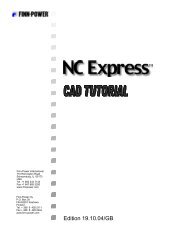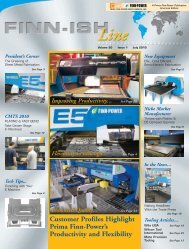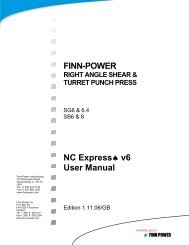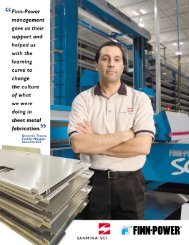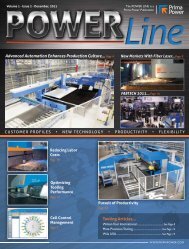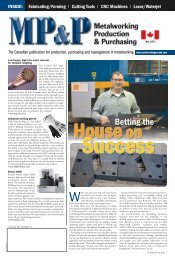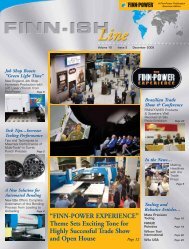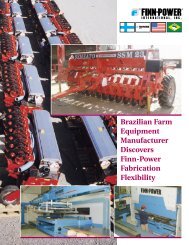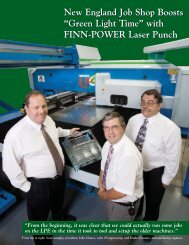Stand-Alone Punch machine user manual - Finn-Power International ...
Stand-Alone Punch machine user manual - Finn-Power International ...
Stand-Alone Punch machine user manual - Finn-Power International ...
You also want an ePaper? Increase the reach of your titles
YUMPU automatically turns print PDFs into web optimized ePapers that Google loves.
Within the optimizer is a wide array of options to set by the <strong>user</strong> to allow different<br />
outcomes for many different situations. Some options may never be used or some<br />
may be used all the time, it depends on the type of nests that are being created by the<br />
end <strong>user</strong>. The following describes many of the options within the Automatic<br />
Optimizer.<br />
6.1.1 <strong>Punch</strong> Optimizer<br />
When processing nest for turret punch press <strong>machine</strong>s the <strong>Punch</strong> Optimizer is<br />
always utilized. Before executing the optimization process, there are options that<br />
can be set to deliver a desirable outcome. Within the <strong>Punch</strong> Optimizer is the ability<br />
to control how and when tools are used, determined by options selected.<br />
When processing nested plates the desired outcome may vary between each plate.<br />
Changes can easily be made when processing each separate plate through the <strong>Punch</strong><br />
Optimizer. Or, if all plates will be processed similarly then they are capable of<br />
being processed in a batch mode by selecting all plates nested at once. The purpose<br />
of optimization is to process and create an outcome in a timely and efficient<br />
manner, at the same time tailored to the <strong>user</strong>s needs.<br />
Parts that are to be processed on a <strong>Stand</strong>alone punch <strong>machine</strong> require that they be<br />
punched or nibbled only. Once the tools are applied to a part, either automatically<br />
or interactively, and the part(s) are nested they are ready to be optimized. Because<br />
there are no secondary operations on a <strong>Stand</strong>alone <strong>machine</strong> (ex. shear or laser) the<br />
<strong>Stand</strong>alone environment will only utilize the <strong>Punch</strong> Optimizer to process sheets.<br />
The <strong>Punch</strong> Optimizer options will control tooling and clamp placements on the<br />
sheet. Along with tooling and clamp control there is also the option to control the<br />
order in which parts are removed (unloaded) from the sheet.<br />
The following will explain many of the functions within the <strong>Punch</strong> Optimizer.<br />
6.1.1.1 Tool Groups<br />
When setting up tools within the Tool Library each tool has a specified<br />
Optimization group (tool group) applied. This is an important step in the<br />
process of setting up tools because this will control the order in which tools are<br />
used. When the optimizer is opened the Tool Groups used will be displayed<br />
within the <strong>Punch</strong> Optimizer tool group window. The set order will determine<br />
how tools will be used within the nc file.<br />
6-98




